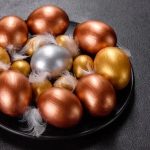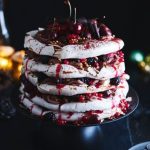The process of decorating a cake is truly an art form, and one of the key elements in creating a beautifully adorned cake is the icing. Whether you are a novice baker or an experienced pastry chef, knowing how to make the perfect icing can elevate your cakes to a whole new level.
Icing not only adds flavor, but it also serves as the canvas on which you can create intricate designs, patterns, and textures that will impress both your loved ones and guests.
In this article, we will explore the different types of icing, essential tools and ingredients needed for homemade icing, step-by-step guides to making classic buttercream icing, tips and tricks for adding color and flavors, piping techniques, advanced decoration methods using fondant and royal icing, troubleshooting common issues with icing, as well as creative icing designs and techniques. Get ready to take your cake decoration skills to the next level with homemade icing.
Cake decoration has been around for centuries and has evolved into a true art form. From simple buttercream flowers to elaborate fondant sculptures, there is no limit to what you can achieve with the right tools and techniques. While there are many aspects to consider when decorating a cake, one of the most important is choosing the right type of icing.
In this article, we will delve into the different types of icings typically used in cake decoration: buttercream, royal and fondant. Each type has its own unique characteristics that lend themselves to various styles and designs. We will discuss their differences in texture, taste, and usage so that you can choose the perfect icing for your specific needs.
Before diving into specific recipes or techniques for making or using each type of icing, it is essential to have a good understanding of the tools and ingredients required. This section will cover everything from must-have items like mixing bowls, spatulas, and mixers to essential ingredients such as powdered sugar, butter or shortening, flavorings like vanilla extract, and food coloring. Having the right tools and ingredients on hand will ensure a smooth and successful icing-making process.
Understanding the Different Types of Icing
Icing is an essential element when it comes to cake decoration. It not only adds a delightful touch to any cake but also serves as a medium for creating stunning designs and patterns. There are different types of icing that can be used depending on the desired effect and texture. The three most commonly used icings for cake decoration are buttercream, royal, and fondant icing.
Buttercream Icing
One of the most popular icings for cake decoration is buttercream. Made from butter, powdered sugar, and flavorings, such as vanilla or almond extract, buttercream makes for a creamy and rich frosting that is perfect for piping and creating decorative swirls. Its soft texture allows for easy spreading on cakes without much effort.
To make a classic buttercream icing, start by creaming softened butter until it becomes light and fluffy. Gradually add powdered sugar while continuing to mix until smooth and well incorporated. Finally, add in your preferred flavorings and continue mixing until everything is fully combined. Buttercream is versatile as it can be easily colored using food coloring gels or flavored using extracts or essences.
Royal Icing
Royal icing is another type of icing commonly used in cake decoration. This type of icing consists mainly of powdered sugar and egg whites or meringue powder mixed with water or lemon juice. Royal icing dries hard which makes it ideal for creating intricate designs such as flowers, scrolls, lacework, and other delicate details on cakes.
To make royal icing from scratch, whisk together powdered sugar and meringue powder in a large bowl. Gradually add water or lemon juice while continuously whisking until the mixture becomes thick and glossy with stiff peaks forming when the whisk is lifted. Adjust the consistency by adding more water if you want a thinner consistency or more powdered sugar if you prefer a thicker consistency.
Fondant Icing
Fondant icing is a smooth and pliable icing that can be rolled out to cover cakes or sculpted into various shapes and figures. Made from melted marshmallows, water, flavoring, and powdered sugar, fondant provides an elegant and flawless finish to cakes. It is commonly used for wedding cakes or cake decorations that require a sleek and polished look.
To make fondant icing at home, melt marshmallows over low heat until they become smooth and liquid-like. Gradually add powdered sugar while stirring until the mixture thickens and begins to form a dough-like consistency. Transfer the fondant onto a clean surface dusted with powdered sugar or cornstarch and knead it until it becomes pliable. Keep the fondant covered tightly in plastic wrap to prevent it from drying out.
Understanding the different types of icing will help you choose the right one for your cake decoration needs. Buttercream, royal, and fondant icing each offer unique characteristics that can complement your creativity in creating stunning cake decorations. Experiment with these variations to achieve the desired texture, flavor, and appearance for your homemade cakes.
Essential Tools and Ingredients for Homemade Icing
Every cake decorator knows that having the right tools and ingredients is essential when making homemade icing. From measuring cups to mixers, each tool serves a specific purpose in achieving the perfect consistency and texture for your icing. Additionally, selecting high-quality ingredients will ensure that your icing not only tastes delicious but also holds its shape and stability.
One of the most important tools in making icing is a stand mixer or hand mixer. These appliances make the process of mixing the ingredients much easier and quicker, ensuring that all the ingredients are thoroughly incorporated.
In addition to a mixer, other essential tools include measuring cups and spoons, spatulas for scraping down the sides of bowls, a sturdy whisk for mixing in any lumps, and a piping bag or decorating tip set if you plan on creating intricate designs.
When it comes to ingredients, using fresh and high-quality butter or shortening is crucial for buttercream icing recipes. The fat content in these ingredients contributes to the richness and flavor of your icing while also providing stability. Confectioners’ sugar or powdered sugar is another must-have ingredient as it helps thicken and sweeten your icing. Other common ingredients include milk or heavy cream for adjusting consistency, vanilla extract for flavoring, and salt to enhance sweetness.
By investing in these essential tools and using quality ingredients, you can ensure that your homemade icing turns out beautifully every time. Having these items on hand will save you time and frustration during the cake decorating process and allow you to focus on unleashing your creativity with various designs and techniques.
Step-by-Step Guide
To make a classic buttercream icing, you will need a few key ingredients and follow a step-by-step process.
First, gather the following tools and ingredients:
- 1 cup (2 sticks) unsalted butter, at room temperature.
- 4 cups powdered sugar.
- 2 teaspoons vanilla extract.
- Pinch of salt.
- 2 to 4 tablespoons milk or heavy cream.
Next, follow these steps:
- Beat the butter: Using an electric mixer or stand mixer with the paddle attachment, beat the room temperature butter on medium speed until it is creamy and smooth. This usually takes around 2 to 3 minutes.
- Add powdered sugar: Gradually add the powdered sugar to the beaten butter, about 1 cup at a time, mixing on low speed after each addition. Once all the powdered sugar is added, increase the speed to medium-high and continue beating until the mixture is light and fluffy.
- Add vanilla extract and salt: Mix in the vanilla extract and salt on low speed until well combined. These ingredients enhance the flavor of the icing.
- Gradually add milk or cream: With the mixer still running on low speed, gradually add in 2 tablespoons of milk or heavy cream. If you prefer a thinner consistency for spreading or piping, continue adding additional milk or cream one tablespoon at a time until desired consistency is reached.
Once your classic buttercream icing is ready, you can use it immediately to frost your cake or transfer it to an airtight container for later use.
| Ingredients | Amount |
|---|---|
| Unsalted Butter | 1 cup (2 sticks) |
| Powdered Sugar | 4 cups |
| Vanilla Extract | 2 teaspoons |
| Salt | Pinch |
| Milk or Heavy Cream | 2 to 4 tablespoons |
Adding Color and Flavors to Your Icing
When it comes to cake decoration, adding color and flavors to your icing can take your creation to the next level. The right combination of colors and flavors can enhance the overall aesthetic appeal of your cake, making it even more enticing. Here are some tips and tricks to help you achieve vibrant colors and delicious flavors in your homemade icing.
Coloring Your Icing
Adding color to your icing is an essential part of cake decorating. Whether you want a soft pastel shade or a bold and vibrant hue, there are several options available to achieve the desired effect. Here are some methods for coloring your icing:
- Gel Food Coloring: Gel food coloring is highly concentrated, giving you intense and vibrant colors without altering the consistency of your icing.
- Liquid Food Coloring: Liquid food coloring is readily available in most grocery stores and can be used in small quantities for a subtle shade or in larger amounts for a bolder color.
- Natural Food Colorings: If you prefer using natural ingredients, you can make your own food colorings using items like beetroot powder for pink, turmeric for yellow, or spinach juice for green.
Flavoring Your Icing
Adding flavor to your icing can elevate the taste profile of your cake. From traditional vanilla and chocolate to unique flavors like lavender or coconut, there are endless possibilities when it comes to adding flavor. Consider these options for flavoring your icing:
- Extracts: Use extracts such as vanilla, almond, lemon, or peppermint to infuse a delightful aroma into your icing.
- Citrus Zest: Adding grated zest from citrus fruits like lemons, oranges, or limes can bring a refreshing tanginess to your icing.
- Liqueurs: Add a touch of sophistication to your icing by incorporating liqueurs like Kahlua, Grand Marnier, or Amaretto.
- Spices: Experiment with spices like cinnamon, nutmeg, or ginger to create warm and cozy flavors in your icing.
By mastering the art of coloring and flavoring your icing, you can make your cakes visually appealing and tantalizing to the taste buds. Remember to start with small amounts when adding color or flavor and gradually adjust until you achieve the desired outcome. With practice, you’ll become adept at creating stunning designs that not only look fabulous but also taste fantastic.
Mastering Piping Techniques
Types of Piping Tips and Their Uses
One of the key elements in mastering piping techniques is having the right tools, and this includes a variety of piping tips. Piping tips come in different shapes and sizes, each with its own unique design possibilities. Here are some commonly used piping tips and their uses:
- Round tip: This is a versatile tip that can be used to create dots, outlines, writing, and details on cakes.
- Star tip: The star tip can be used to create borders, rosettes, stars, shells, and other textured designs.
- Petal tip: As the name suggests, this tip is perfect for creating realistic flower petals and ruffles.
- Leaf tip: With its teardrop shape, the leaf tip is ideal for creating leaves as well as other textured designs.
- Basketweave tip: This specialized tip can be used to create woven patterns that resemble basketweave on cakes.
Pipe Consistency: Getting it Just Right
In order to achieve beautiful designs with icing, it’s important to have the right consistency. If your icing is too stiff, it may be difficult to pipe intricate details. On the other hand, if the icing is too runny, your designs may lose their shape.
To achieve the ideal consistency for piping, start by preparing a basic buttercream icing according to your recipe. If the icing feels too stiff or hard to pipe through the desired tips, you can add small amounts of liquid (such as milk or water) until it reaches a smooth but still thick consistency. Alternatively, if your icing is too thin or runny, you can gradually add more powdered sugar until it thickens up.
Practicing Basic Piping Techniques
Before moving on to more complex designs, it’s important to practice some basic piping techniques. Start by filling a piping bag fitted with your desired tip, and hold it at a 90-degree angle to the surface you are piping on. Squeeze gently and steadily, applying even pressure to create a consistent flow of icing.
Experiment with different pressures and speeds to achieve different effects – for example, light pressure can create delicate lines and dots, while heavier pressure can create bolder designs. Practice piping straight lines, curves, and different shapes until you feel comfortable and confident.
Remember that practice makes perfect when it comes to piping techniques. Don’t be discouraged if your first attempts don’t turn out exactly as planned – with time and practice, you will improve your skills and be able to create beautiful designs with ease.
Exploring Advanced Icing Decorations
Fondant and royal icing are two advanced icing techniques that can take your cake decorations to the next level. These techniques allow for more intricate designs and a professional finish.
Fondant
Fondant is a smooth, pliable icing that can be rolled out and draped over a cake for a flawless finish. It creates a clean canvas for more elaborate decorations and can be easily molded into shapes, figures, or patterns. To work with fondant, you will need the following:
- Fondant: You can either make your own from scratch using marshmallows and powdered sugar or purchase pre-made fondant from a store.
- Rolling pin: A smooth rolling pin specifically designed for working with fondant is recommended.
- Cornstarch: This will prevent the fondant from sticking to the surface as you roll it out.
- Fondant smoother: This tool helps to create a seamless finish on the cake.
- Fondant cutters: These come in various shapes and sizes and are used to create decorative elements such as flowers or leaves.
Royal Icing
Royal icing is a hard-drying icing that is perfect for creating intricate details such as lacework or delicate piping. It dries into a firm texture, making it ideal for building structures on cakes or creating 3D embellishments. Here are the tools and ingredients you will need:
- Powdered sugar (confectioners’ sugar): This forms the base of royal icing.
- Egg whites: The protein in egg whites helps to stabilize the icing and give it structure.
- Lemon juice or cream of tartar: These ingredients act as stabilizers and help prevent the royal icing from becoming overly stiff.
- Piping bags and tips: These allow you to control the flow of royal icing and create precise designs. Various tips can be used to achieve different effects, such as writing or creating intricate lace patterns.
- Gel food coloring: Since royal icing is naturally white, gel food coloring is used to add color to the icing.
Whether you choose to work with fondant or royal icing, practicing and experimenting with different techniques will help you take your cake decoration skills to new heights. With time and dedication, you can create stunning and professional-looking cakes that are sure to impress everyone who sees them.
Troubleshooting Common Icing Issues
When it comes to cake decoration, one of the most frustrating problems that can arise is issues with the icing. Whether it’s cracking, melting, or being overly stiff, these common icing issues can quickly derail your efforts to create a beautifully decorated cake. Fortunately, there are solutions to these problems that can help you achieve the smooth and flawless finish you desire.
One of the most common issues with icing is cracking. This typically occurs when the icing becomes too dry and loses its elasticity. To prevent cracking, it’s important to ensure that your buttercream is well-mixed and has a creamy consistency.
One way to achieve this is by gradually adding small amounts of liquid (such as milk or cream) while mixing until you reach the desired texture. Additionally, make sure that your cake has been properly leveled before applying the icing, as uneven surfaces can cause stress on the icing and lead to cracks.
Another issue that many decorators encounter is melting icing. This can be particularly problematic in hot and humid climates or when transporting a cake during warm weather. To prevent melting, it’s essential to use the right type of icing for the conditions you’re working in.
Buttercream icings are more susceptible to melting due to their butter content, so consider using royal icing or fondant when decorating cakes in warm environments. Additionally, refrigerating your iced cake before transportation or keeping it in an air-conditioned space can help minimize melting.
On the opposite end of the spectrum, some decorators may find themselves dealing with overly stiff icing that makes it difficult to achieve smooth and even finishes on their cakes. In this case, adding small amounts of liquid (such as water or flavor extracts) while mixing can help soften up the icing and make it more workable.
Alternatively, warming up your icing slightly by placing it over a pan of warm water or using an icing warmer can also help to soften it. It’s important to add the liquid or warmth gradually and mix well after each addition to ensure the desired consistency is achieved.
By understanding and implementing these solutions, you can troubleshoot common icing issues and maintain control over your cake decoration process. Remember that practice makes perfect, so don’t be discouraged if you encounter difficulties along the way. With time and experience, you’ll become more adept at handling any icing challenges that come your way, and your cake decoration skills will continue to grow.
Creative Icing Designs and Techniques
Once you have mastered the art of making icing and are comfortable with the basic techniques, it’s time to explore more creative designs and techniques to take your cake decoration skills to the next level. From simple yet elegant designs to extravagant creations, there are endless possibilities when it comes to decorating cakes with icing.
One popular technique that can add dimension and texture to your cakes is called “ruffles.” To create ruffles, start by applying a generous amount of buttercream icing onto your cake using a piping bag fitted with a petal or leaf tip. Hold the piping bag at a 45-degree angle and gently squeeze the bag while moving it in an upward motion. This will create beautiful, cascading ruffles on the sides of your cake.
Another exciting technique is called “ombre,” where you gradually transition from one color to another. To achieve this effect, divide your buttercream icing into several bowls and tint each bowl with different shades of the same color. Starting from the bottom of your cake, apply the darkest shade and use an offset spatula to create smooth even layers. Gradually work your way up, using lighter shades each time until you reach the top, creating a stunning ombre effect.
For those looking for more extravagant designs, consider using fondant to create intricate decorations. Fondant is a pliable sugar paste that can be rolled out into sheets and used for covering cakes or sculpting various shapes such as flowers, bows, or even figurines. To work with fondant successfully, make sure you knead it well until it becomes soft and malleable.
Roll it out on a surface dusted with powdered sugar or cornstarch to prevent sticking. Use cookie cutters or specialty molds to create unique shapes that can be placed on top of your cake for a show-stopping design.
Conclusion
In conclusion, mastering the art of cake decoration and creating beautiful designs with homemade icing is a skill that can truly showcase your creativity and talent. By understanding the different types of icing, essential tools and ingredients, and step-by-step guides, you can confidently create stunning cakes that will impress everyone.
Experimenting with colors and flavors in your icing can add an extra element of surprise to your creations. With the right tips and tricks, you can easily transform a simple cake into a work of art. Don’t be afraid to be bold and try new combinations – the possibilities are endless.
Piping techniques are another way to elevate your cake decorating skills. By learning how to use piping bags and mastering different techniques, you can create intricate designs that will leave a lasting impression on your friends and family.
Finally, don’t forget to explore advanced icing decorations using fondant and royal icing. These techniques can take your cake decoration skills to the next level. With practice and patience, you’ll be able to create stunning fondant figures or delicate royal icing flowers that will truly wow everyone.
Frequently Asked Questions
What kind of icing is best for decorating cakes?
When it comes to decorating cakes, the best kind of icing is typically buttercream icing. Buttercream is incredibly versatile and easy to work with, making it a popular choice among both professional bakers and beginners.
It has a creamy texture that can be easily spread or piped onto a cake, and it holds its shape well, allowing for intricate designs and decorations. Additionally, buttercream icing can be flavored and colored in various ways to match any theme or occasion, further enhancing its appeal as the go-to choice for cake decoration.
How to make the perfect icing for a cake?
Making the perfect icing for a cake requires attention to detail and a few key techniques. Start by ensuring your butter or shortening is at room temperature before you begin mixing, as this will help create a smooth consistency. Gradually add powdered sugar while mixing until the desired sweetness is achieved.
To enhance flavor, incorporate ingredients such as vanilla extract or cocoa powder for chocolate icing. Texture can be adjusted by adding milk or heavy cream slowly until the desired stiffness or creaminess is attained. Remember to mix consistently throughout the process to avoid lumps in the icing.
Which frosting is best for beginners?
For beginners venturing into cake decorating, whipped cream frosting often proves to be an excellent choice due to its simplicity and forgiving nature. This type of frosting is light, fluffy, and relatively easy to make with just a few ingredients – heavy cream, sugar, and vanilla extract being the main ones.
Its airy consistency allows for quick spreading on cakes without requiring complex piping techniques that might overwhelm newcomers in their initial attempts at decoration. While whipped cream frosting lacks the same longevity as buttercream when it comes to holding shape or enduring high temperatures, it remains an ideal starting point for those eager to explore cake decorating while still developing their skills.

Welcome to my blog about home and family. This blog is a place where I will share my thoughts, ideas, and experiences related to these important topics. I am a stay-at-home mom with two young children. I hope you enjoy reading it! and may find some helpful tips and ideas that will make your home and family life even better!





